Last Chance to Catch NYC's Holiday Notalgia Train
We met the voices of the NYC subway on our nostalgia ride this weekend!


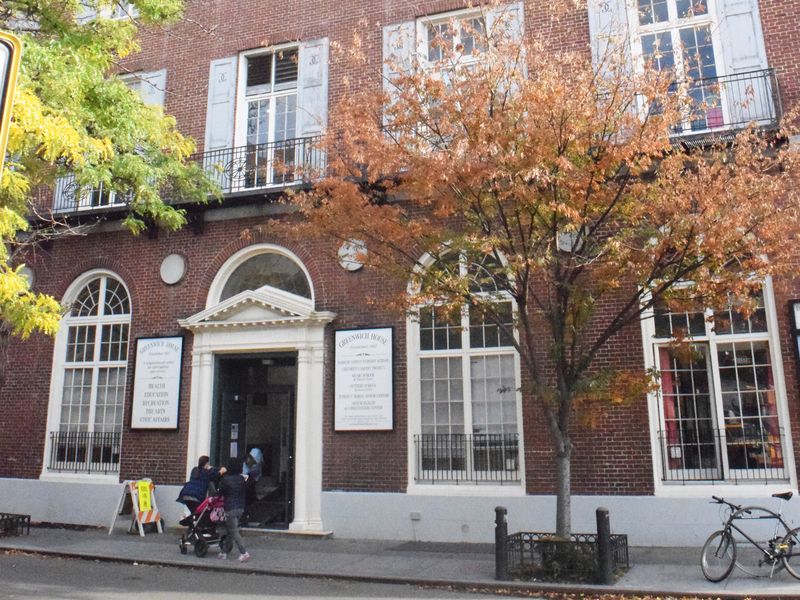
It’s difficult to capture all that Greenwich House is and all that it does for the community in just one sentence. Founded as a settlement house in 1902 to help the surrounding immigrant population adapt to life in America, the institution has evolved over the past 120 years to meet the needs of its changing neighborhood. Greenwich House not only offers social and health services but also provides access to renowned arts and music programs. The mission has always been to serve the whole human. “There was something baked into our earliest DNA in which our founders saw that access to music and the arts was not just a “nice to have” but something as essential to the human experience as the most core health and human services we offer,” explained Darren Bloch, Executive Director & CEO, “It’s energizing to do this type of work in what is arguably one of the cultural creative capitals of the world, not just New York City or the country.”
In three different historic buildings in the heart of Greenwich Village, Greenwich House has provided essential community services throughout the most difficult times including the 1918 flu pandemic, the AIDS crisis, and most recently the outbreak of COVID-19. “Our spaces intentionally bring together the community. There is a magic that happens around Greenwich House,” says Bloch. In celebration of the 120th anniversary, Untapped New York Insiders are invited to Greenwich House for a guided tour on January 26th or February 13th. These tours are free for Untapped New York Insiders. Read on to uncover the secrets of this historic New York City establishment:
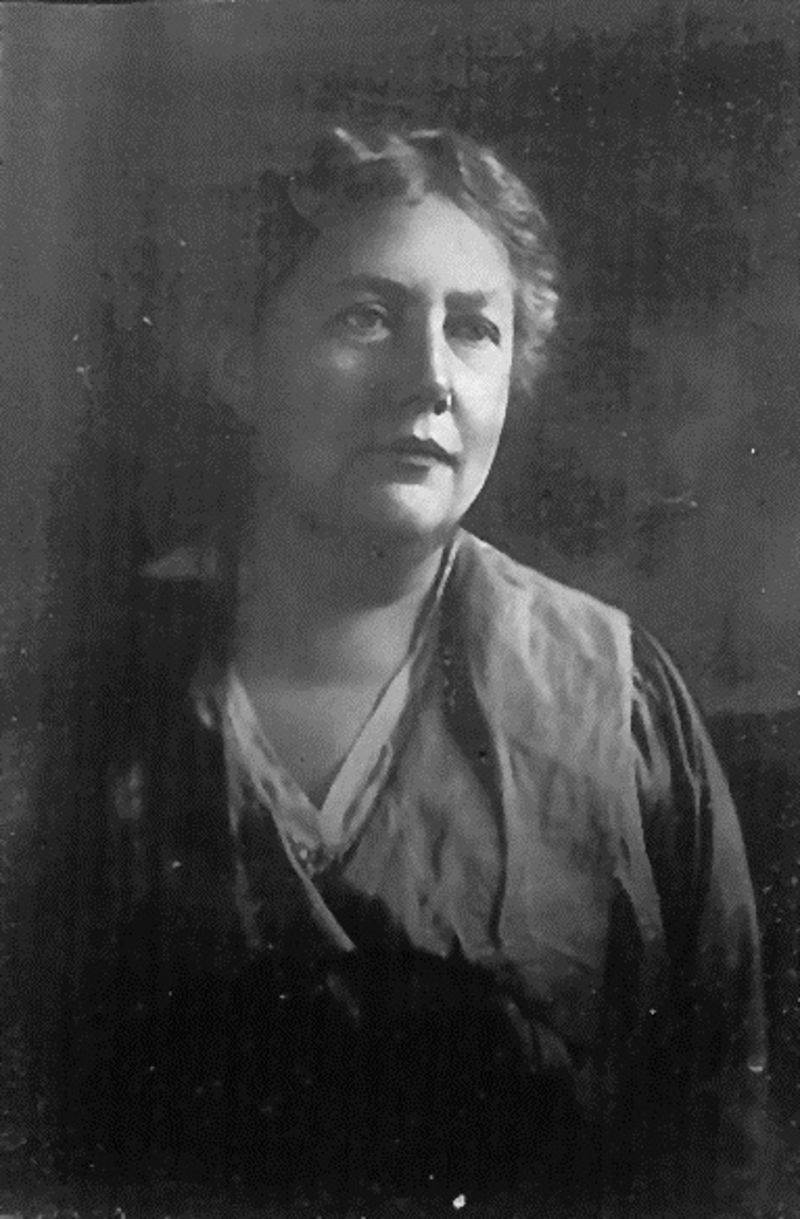
Like Diana Prince, Greenwich House founder Mary Kingsbury Simkhovitch was a hero to many, and she was featured in a comic book. Simkhovitch was honored with inclusion in the 55th issue of Wonder Woman which was published on July 23, 1952. Her comic-character likeness was featured in the “Wonder Women of History” section which ran throughout the comic’s first year. The three-page comic strip shows Simkhovitch surveying the problems in her neighborhood, fundraising to start Greenwich House, teaching cooking classes, and writing books. You can see the full comic here.
Mary Kingsbury Simkhovitch opened Greenwich House on Thanksgiving Day, 1902, at 26 Jones Street. Social reformers like Jacob Riis and the founder of the Whitney Museum of American Art, Gertrude Vanderbilt Whitney were among the many notable people who served on the first board. The goal was to help the largely immigrant population of the neighborhood adjust to life in America. From the beginning, Greenwich House recognized that the arts are an integral part of living a full and well-balanced life. In addition to providing vocational training, housing, and health and nutrition services, there were music and art lessons, all programs that have continued to flourish over the past 120 years. Adam Welch, Former Director of Greenwich House Pottery, told Untapped New York one of his favorite stories from the early days of Greenwich House is that of an Italian father from the neighborhood telling Simkhovitch, “My children need music as they need bread.”
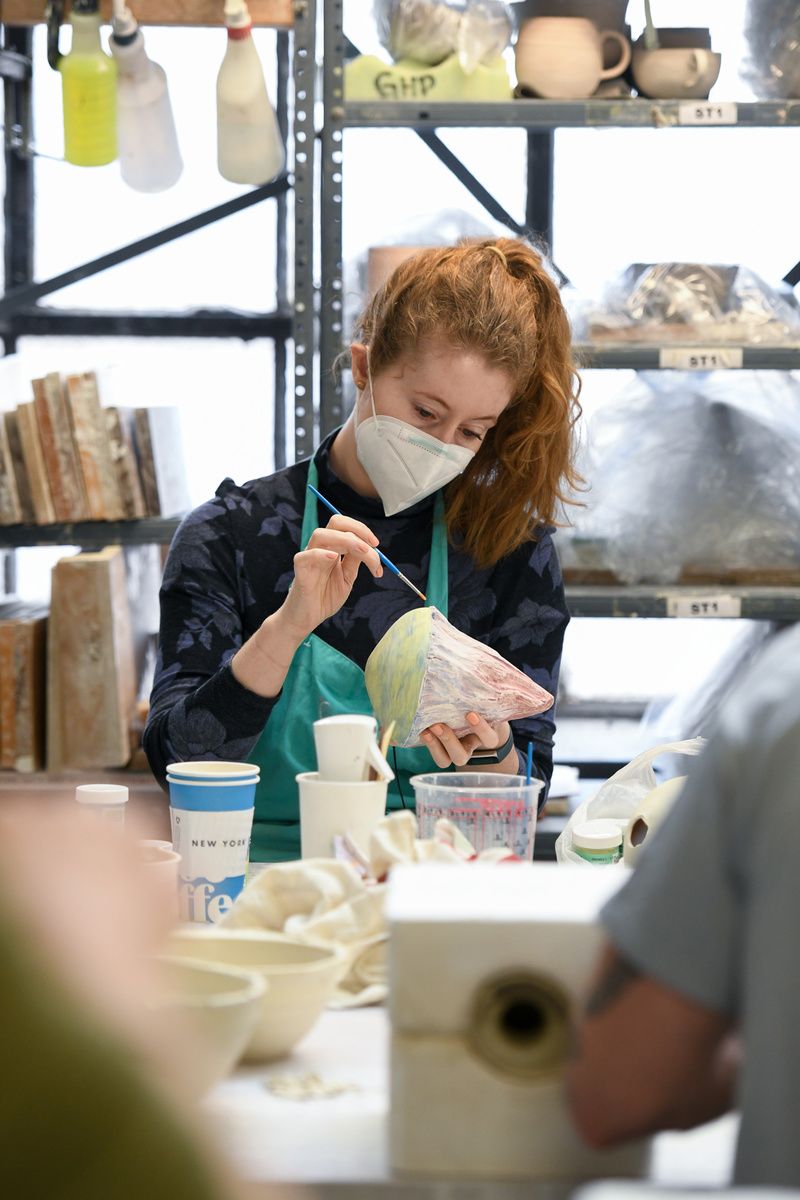
As mentioned, Gertrude Vanderbilt Whitney was one of the founding board members of Greenwich House. It was through her generosity that an Arts School was able to open in the House’s headquarters at 27 Barrow Street. The new location, designed by the illustrious architecture firm of Delano & Aldrich, opened in 1917, again on Thanksgiving Day.
In addition to giving funds for the school, Whitney also gave access to her big-name connections. The walls of the Arts School were decorated with murals by Whitney’s famous artist friends of the time including Daniel Chester French, John Sloan, and James Fraser. Whitney, who was an artist in her own right, would go on to found her own museum, The Whitney Museum of Art.
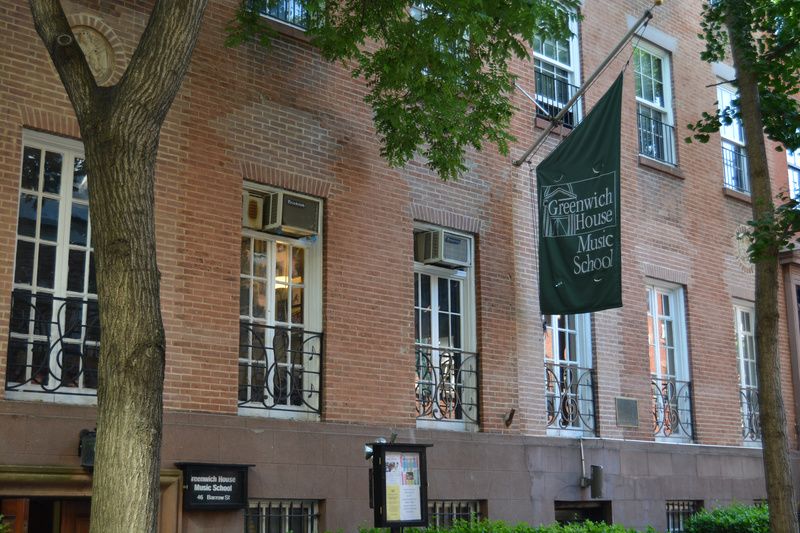
Since its opening in 1902 at 26 Jones Street, Greenwich House has undergone many physical evolutions. At one point, Greenwich House owned or occupied all of the buildings at 16, 18, 26, 28, and 30 Jones Street. The first additional building opened in 1913 at 46 Barrow Street. This building was added to house the rapidly growing music school and still serves as the music school to this day. In 1917, a new headquarters was built at 27 Barrow Street. In 1928, the House expanded again, this time to 16 Jones Street where a Workshop Building was established. This is where the pottery program operates today.
If you pay attention, there are architectural features on the Music School and Workshop Building that hint at their purpose. On the wrought iron window gates of the Music School, there are large treble clefs and tiny music notes. On the Workshop Building, the gates feature various hand tools like a saw and hammer, tools that would have been used by students as they learned various handicrafts and vocational skills such as woodworking and stone carving.
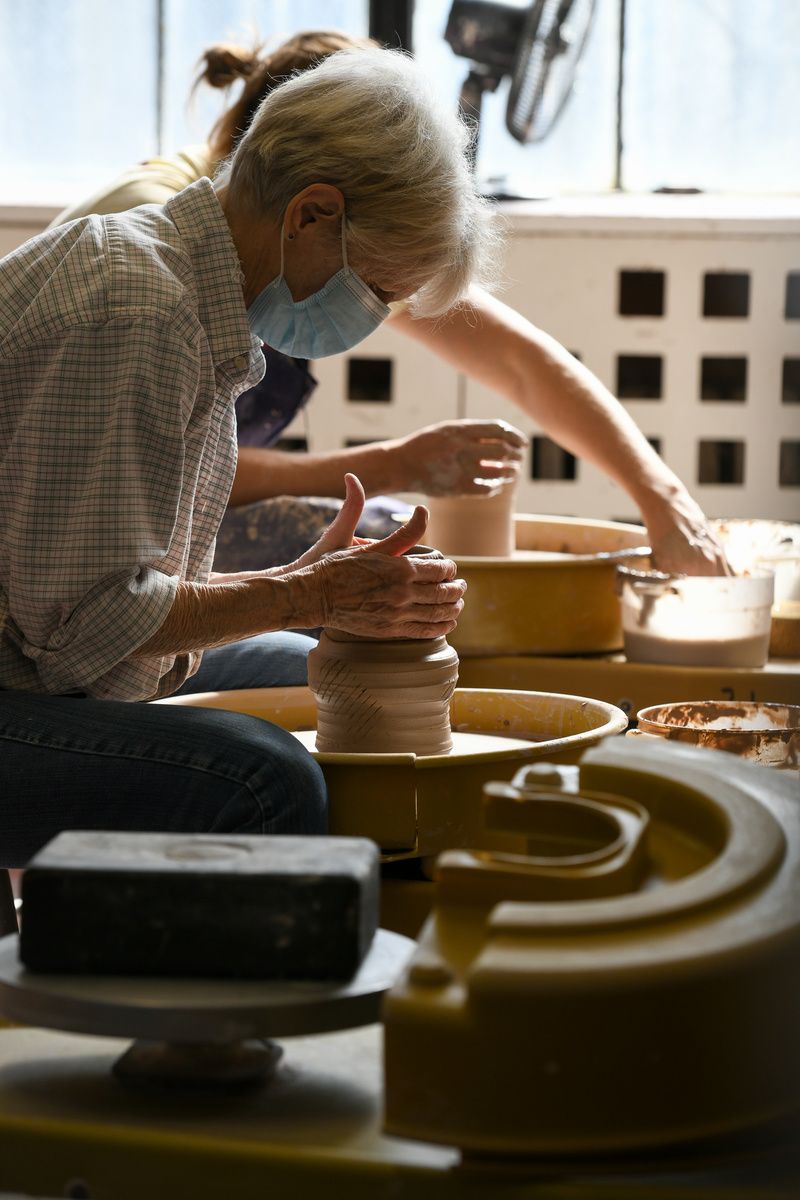
During the 1930s, before he found success as a painter, Jackson Pollock worked part-time as a janitor in the Pottery School. The House notes on its website that one biographer “suggests that Jackson Pollock’s inspiration for his unique drip paintings happened while working around glazes as a janitor at the Pottery School to pay off a class.”
While working and attending classes at Greenwich House, Pollock was also taking classes at the Arts Students League. He lived in various locations in and around Greenwich Village including 49 East 10th Street, 46 East 8th Street, and 46 Carmine Street.
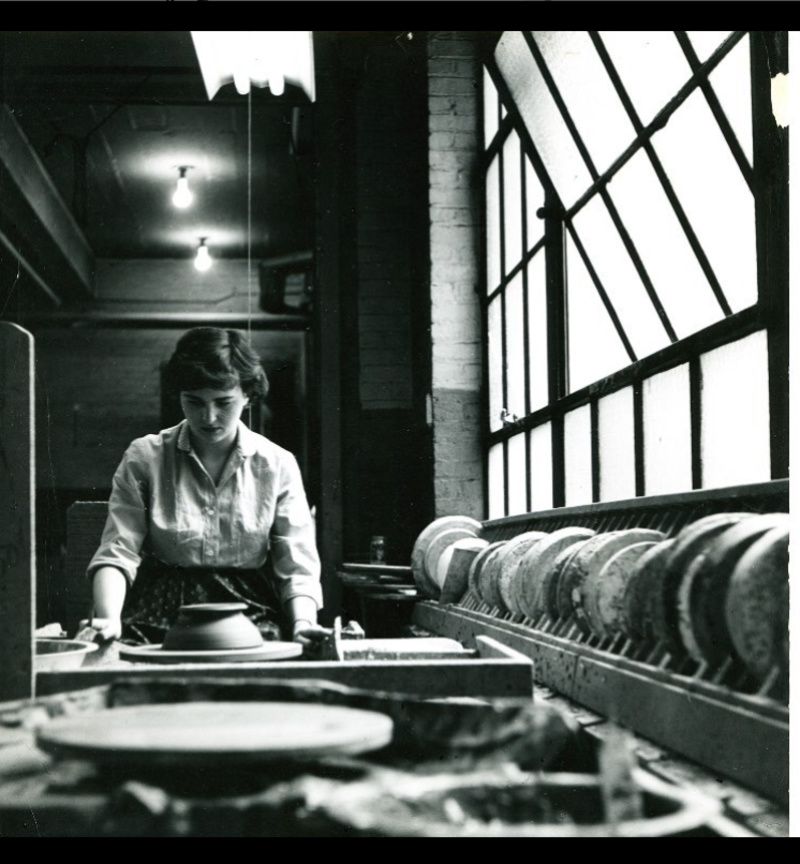
Adam Welch, Former Director of Greenwich House Pottery, told Untapped New York that in combing through the Greenwich House archives, he’s found evidence that pottery classes were happening as early as 1904 with a basement kiln at 26 Jones Street. In 1908 the Handicraft School was officially formed and the pottery program was officially founded in 1909. The Handicraft School taught marketable skills such as stone carving and woodwork.
The Greenwich House Potters, explained Welch, were a group of adults who “came in after factory work was done and made pots in order to sell. They got free use of the studio and everything they made was sold by Greenwich House to make money for Greenwich House. 50% went to Greenwich House, and 50% to the potters.” The goods were even shipped over to New Jersey using horse-drawn carriages. In 1948, Pottery became the sole focus of theHandicraft School and took over the entire building at 16 Jones Street, where the pottery program still runs today. Now, instead of teaching a marketable skill, pottery is practiced simply for art’s sake. “Were offering an opportunity for students to manipulate materials into something else and to express themselves and to live a more fulfilling life,” said Welch. Fabio Fernández, Director of Greenwich House Pottery told Untapped New York that students today range from “people who are having fun and being introduced to clay for the first time to people who are exhibited by New York galleries.” There are a range of competitive programs and residencies as well as classes for people who “want to take advantage of the therapeutic aspects of clay and find community.”
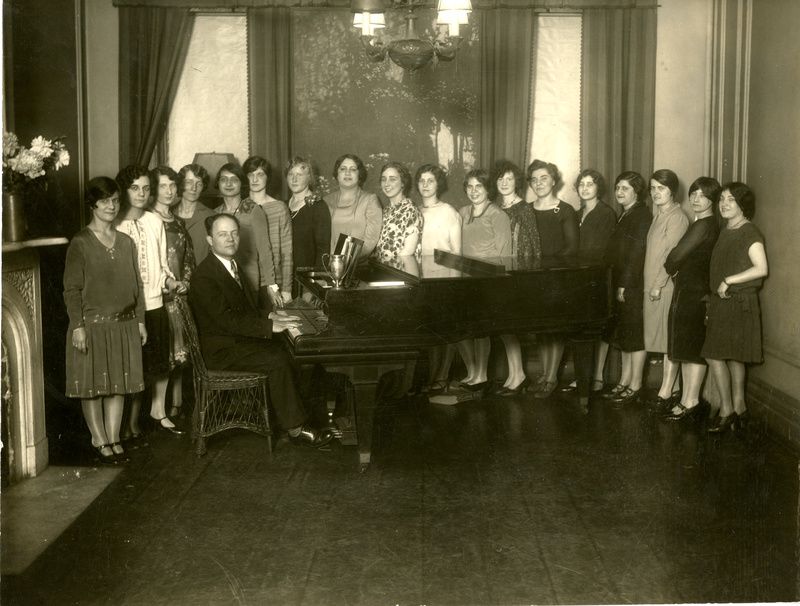
Greenwich House Music School (GHMS) was established in 1905 to “teach students the beauty and transformative power of music, art, dance, and theater.” “We’ve been doing the same thing for 117 years,” Rachel Black, Director of Greenwich House Music School told Untapped New York, “Greenwich House has always placed value on the arts and the performing arts. Our mission is to teach people of all ages in our community.” What makes the Music School special Black explained, is the mix of “artists coming in who are rehearsing and who are performing and students coming in who are learning and developing their craft.” Over the decades, the Music School has trained and hosted illustrious names in the music industry. In the 1930s, avant-garde composers and musicians such as Henry Cowell, John Cage, Carl Ruggles, and Edgard Varese flocked to the school. Through the years, other notable performers including composer Morton Subotnick, pianist Taka Kigawa and harpist Brandee Younger – all part of the faculty at the Music School – have graced the rehearsal and performance spaces.
The Pottery School is no different. The works of pottery students have been exhibited at the Metropolitan Museum of Art and the 1939 World’s Fair. Jane Hartsook, who was appointed director in 1945, brought in world-class artists like Peter Voulkos to teach and work at the school. Other notable names include Rirkrit Tiravanija, Betty Woodman, Ghada Amer, Ann Agee, Kathy Butterly, Simone Leigh, and David Salle.
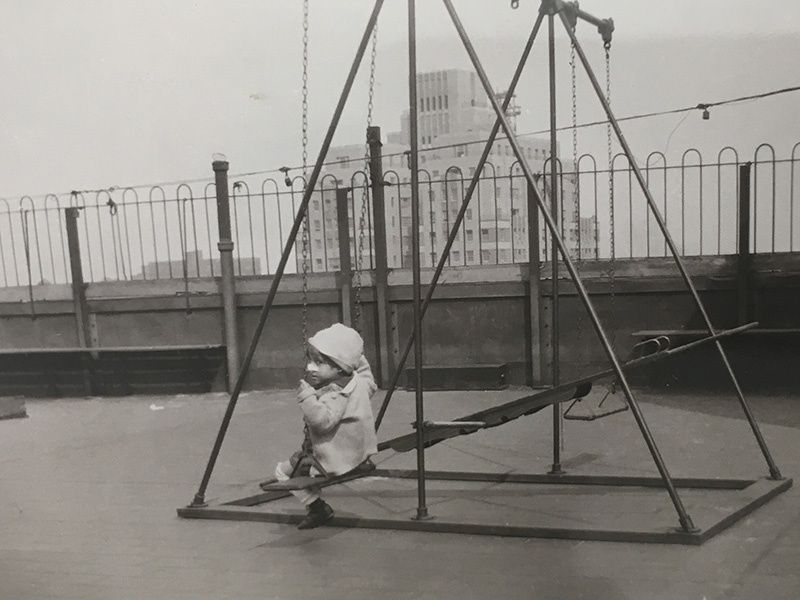
In 1919, to help fulfill the needs of working immigrant mothers in the community, Greenwich House first introduced a nursery school. Childcare programs expanded again in 1920 when daycare was added. Finally, in 1942, after-school programs for older children and teens were introduced. Today, Greenwich House operates the Barrow Street Nursery School at its headquarters at 27 Barrow Street. One of the special features of the school is its rooftop playground that dates all the way to the opening of the Barrow Street headquarters in 1917.
The rooftop playground features a jungle gym, play house, and garden “where students refine their gross motor skills, learn how to cultivate plants, and enjoy the fresh air.” The playground is just one of many areas throughout the building where kids can play and be active. There is also an indoor gymnasium complete with a tricycle track!
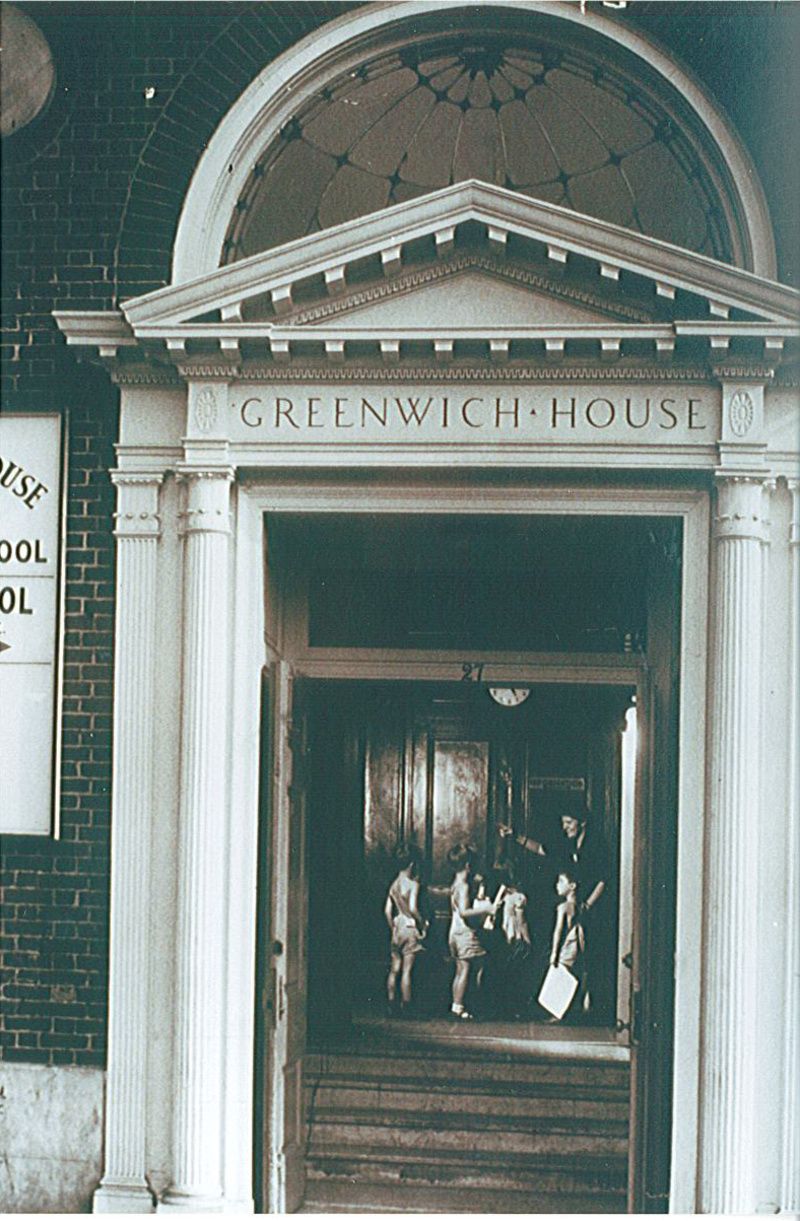
In 1963, with funds from a Federal grant, Greenwich House became the first walk-in outpatient drug counseling center in New York City. It became a licensed psychiatric clinic the next year, the first in the state dedicated exclusively to narcotic addiction. In 1970, the House made another groundbreaking move by starting one of the first Methadone Maintenance Treatment Programs.
Today, mental and behavioral health services continue to be offered to the community. The Methadone Maintenance Treatment Program still exists as an outpatient clinic that “dispenses medication treatment for opioid-dependent adults, and offers individual and group counseling, medical treatment, harm reduction, and vocational counseling.” One of the latest health initiatives was the Center for Resiliency and Wellness created in 2021. This program “provides intergenerational, trauma-informed, mental health services to children, youth, families, adults and older adults, ages 3 to 100+.”
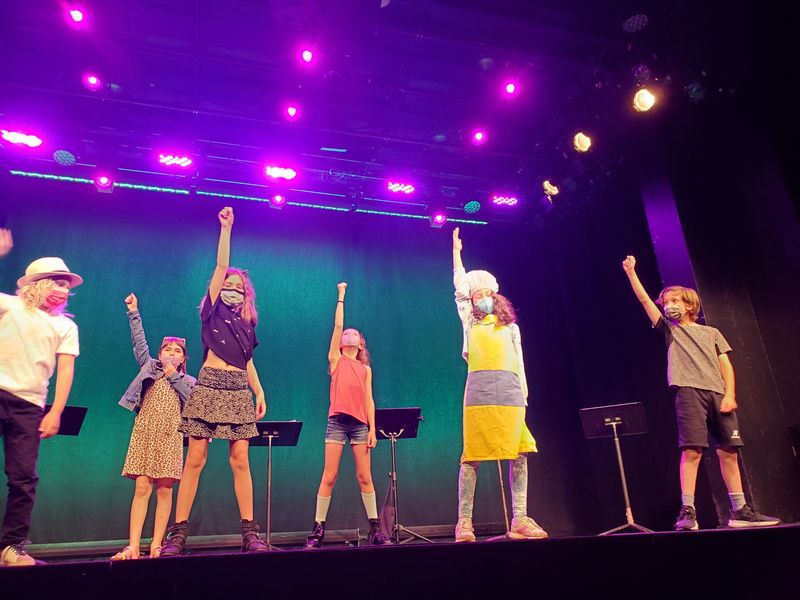
In 1917, Greenwich House Theater got its start as a children’s theater offering classes and productions for the local community. Actor Kirk Douglas, who performed at Greenwich House early in his career, helped to expand the program in the 1940s. Programming was added for teens and young adults.
Since 2019, Ars Nova theater company has partnered with Greenwich House. Headquartered at 511 West 54th Street, Ars Nova “welcomes emerging artists from diverse backgrounds and disciplines, and serves as a creative home and laboratory for meeting collaborators, testing ideas, developing new work, and launching unique voices and careers.”
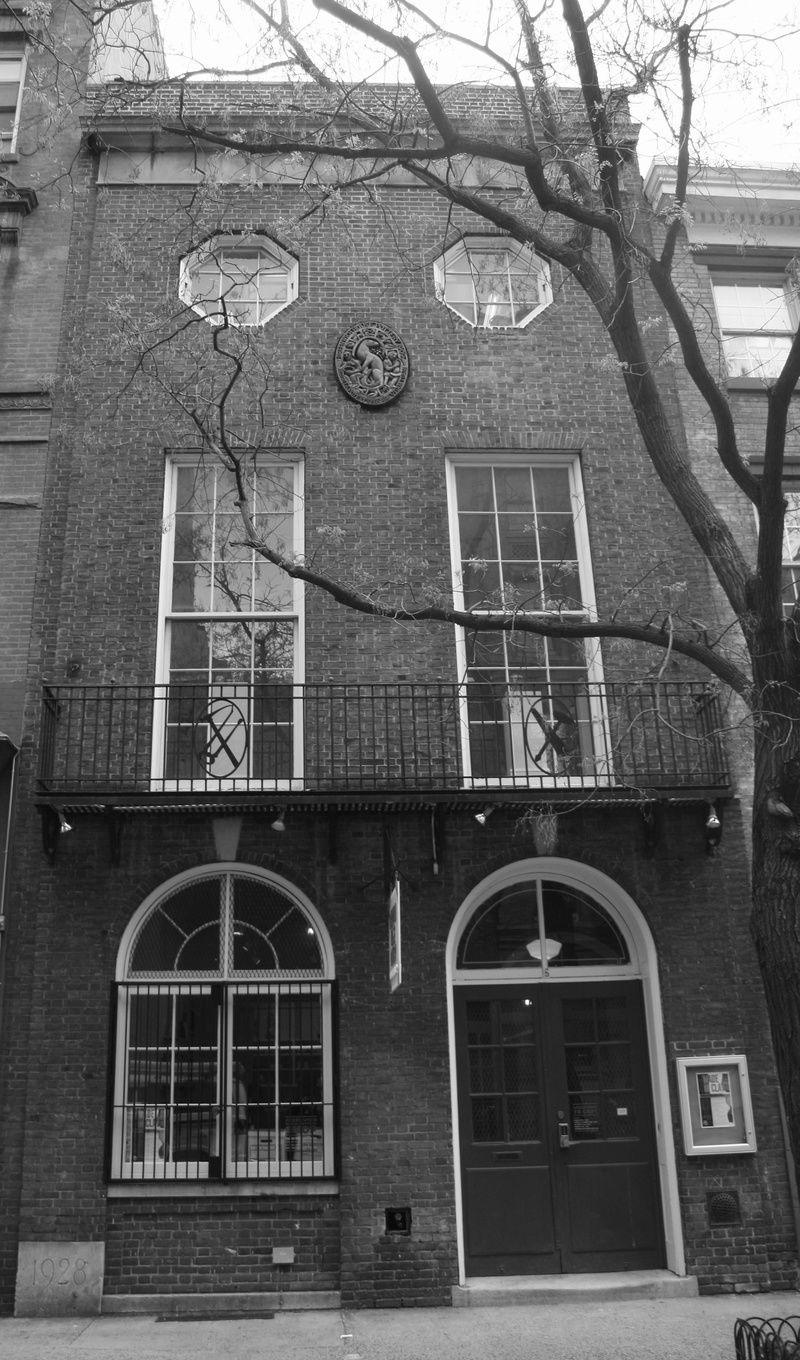
Mary Simkhovitch advocated for better living conditions for New Yorkers through her work at Greenwich House and beyond. A few notable achievements of hers include publishing the Tenant’s Rights Manual and serving as the Chairperson of the New York Board of Welfare. In 1934 she became the Vice President of the New York Housing Authority, a position which she held for fourteen years. During her term, she co-wrote the National Housing Act. She retired from her position as Director of Greenwich House in 1946.
Join Untapped New York Insiders for a guided tour of Greenwich House’s historic buildings on January 26th or February 13th. you’ll explore the unique features of 27 Barrow, including the Greenwich House Theater, indoor track and basketball court, and rooftop as well as the Music School’s recital hall, classrooms, and back garden among other fascinating spaces! These tours are free for Untapped New York Insiders. Not an Insider yet? Become a member today for access to this and more virtual and in-person experiences!
Next, check out The Top 15 Secrets of Greenwich Village and Top 10 Secrets of the Arts Students League
Subscribe to our newsletter